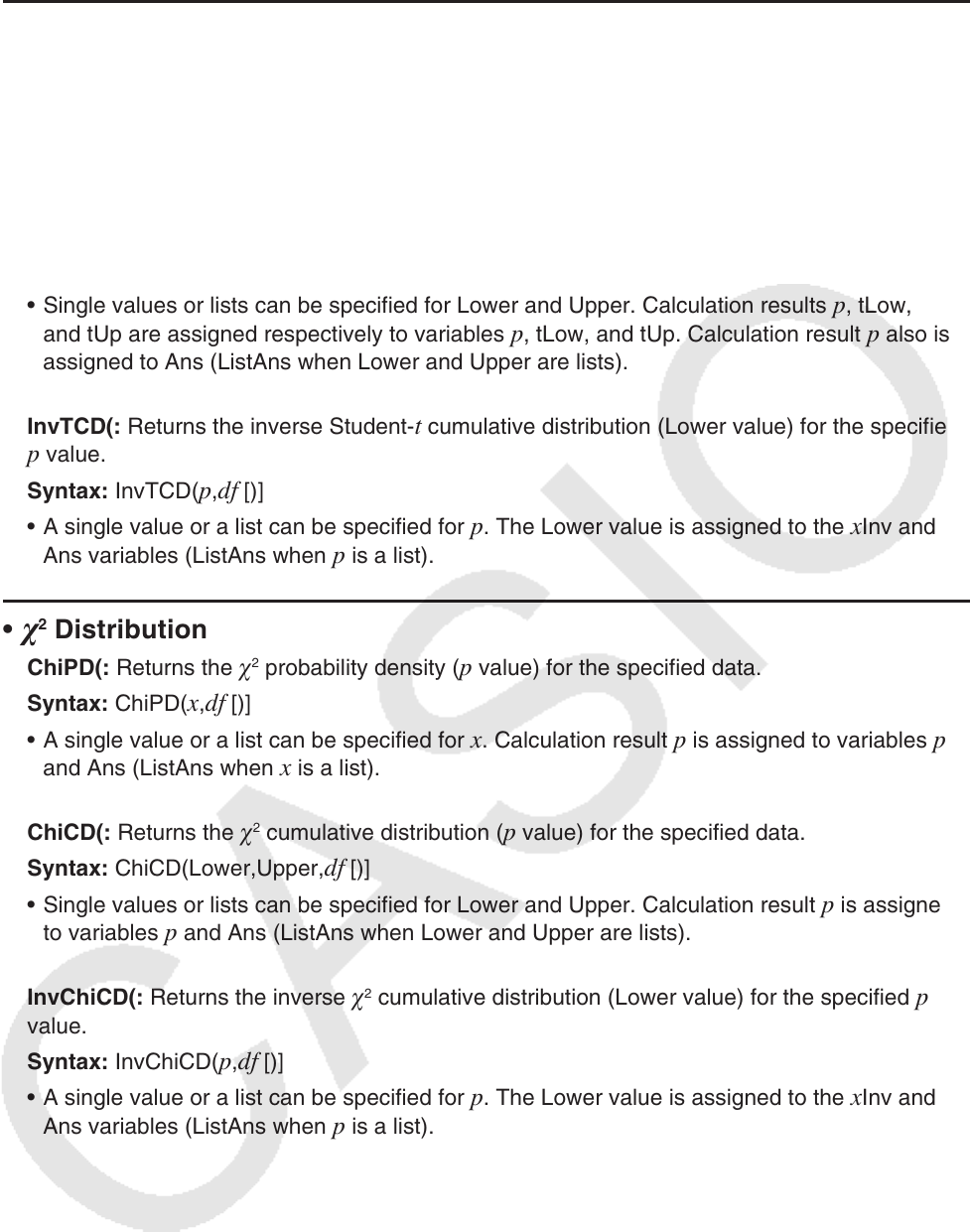User Manual
Table Of Contents
- Contents
- Getting Acquainted — Read This First!
- Chapter 1 Basic Operation
- Chapter 2 Manual Calculations
- 1. Basic Calculations
- 2. Special Functions
- 3. Specifying the Angle Unit and Display Format
- 4. Function Calculations
- 5. Numerical Calculations
- 6. Complex Number Calculations
- 7. Binary, Octal, Decimal, and Hexadecimal Calculations with Integers
- 8. Matrix Calculations
- 9. Vector Calculations
- 10. Metric Conversion Calculations
- Chapter 3 List Function
- Chapter 4 Equation Calculations
- Chapter 5 Graphing
- 1. Sample Graphs
- 2. Controlling What Appears on a Graph Screen
- 3. Drawing a Graph
- 4. Saving and Recalling Graph Screen Contents
- 5. Drawing Two Graphs on the Same Screen
- 6. Manual Graphing
- 7. Using Tables
- 8. Modifying a Graph
- 9. Dynamic Graphing
- 10. Graphing a Recursion Formula
- 11. Graphing a Conic Section
- 12. Drawing Dots, Lines, and Text on the Graph Screen (Sketch)
- 13. Function Analysis
- Chapter 6 Statistical Graphs and Calculations
- 1. Before Performing Statistical Calculations
- 2. Calculating and Graphing Single-Variable Statistical Data
- 3. Calculating and Graphing Paired-Variable Statistical Data (Curve Fitting)
- 4. Performing Statistical Calculations
- 5. Tests
- 6. Confidence Interval
- 7. Distribution
- 8. Input and Output Terms of Tests, Confidence Interval, and Distribution
- 9. Statistic Formula
- Chapter 7 Financial Calculation
- Chapter 8 Programming
- Chapter 9 Spreadsheet
- Chapter 10 eActivity
- Chapter 11 Memory Manager
- Chapter 12 System Manager
- Chapter 13 Data Communication
- Chapter 14 Geometry
- Chapter 15 Picture Plot
- Chapter 16 3D Graph Function
- Appendix
- Examination Mode
- E-CON4 Application (English)
- 1. E-CON4 Mode Overview
- 2. Sampling Screen
- 3. Auto Sensor Detection (CLAB Only)
- 4. Selecting a Sensor
- 5. Configuring the Sampling Setup
- 6. Performing Auto Sensor Calibration and Zero Adjustment
- 7. Using a Custom Probe
- 8. Using Setup Memory
- 9. Starting a Sampling Operation
- 10. Using Sample Data Memory
- 11. Using the Graph Analysis Tools to Graph Data
- 12. Graph Analysis Tool Graph Screen Operations
- 13. Calling E-CON4 Functions from an eActivity

8-43
• Student- t Distribution
tPD(: Returns the Student- t probability density ( p value) for the specified data.
Syntax: tPD(
x , df [)]
• A single value or a list can be specified for
x . Calculation result p is assigned to variables p
and Ans (ListAns when x is a list).
tCD(: Returns the Student-
t cumulative distribution ( p value) for the specified data.
Syntax: tCD(Lower,Upper,
df [)]
• Single values or lists can be specified for Lower and Upper. Calculation results
p , tLow,
and tUp are assigned respectively to variables p , tLow, and tUp. Calculation result p also is
assigned to Ans (ListAns when Lower and Upper are lists).
InvTCD(: Returns the inverse Student-
t cumulative distribution (Lower value) for the specified
p value.
Syntax: InvTCD(
p , df [)]
• A single value or a list can be specified for
p . The Lower value is assigned to the x Inv and
Ans variables (ListAns when p is a list).
•
2
Distribution
ChiPD(: Returns the
2
probability density ( p value) for the specified data.
Syntax: ChiPD(
x , df [)]
• A single value or a list can be specified for
x . Calculation result p is assigned to variables p
and Ans (ListAns when x is a list).
ChiCD(: Returns the
2
cumulative distribution ( p value) for the specified data.
Syntax: ChiCD(Lower,Upper,
df [)]
• Single values or lists can be specified for Lower and Upper. Calculation result
p is assigned
to variables
p and Ans (ListAns when Lower and Upper are lists).
InvChiCD(: Returns the inverse
2
cumulative distribution (Lower value) for the specified p
value.
Syntax: InvChiCD(
p , df [)]
• A single value or a list can be specified for
p . The Lower value is assigned to the x Inv and
Ans variables (ListAns when
p is a list).










